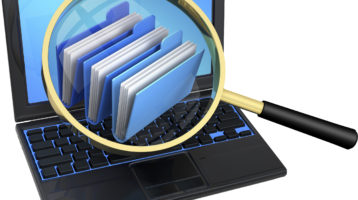Vendor Voice: a needs and benefits analysis for an enterprise e-discovery platform.
Josh Alpernk, James FitzGerald & Jim Mittenthal, Legal Tech Newsletter
Typically, the production of data in litigation involves a series of disconnected actions involving several corporate or cloud-based systems. These disassociated electronic discovery activities—identify, preserve, collect and track—then feed into a downstream set of processing, review and production steps often hosted outside the corporate firewall. Fortunately, technology advances are helping counsel and client alike to integrate systems and streamline processes both inside and across the firewall. These improvements generate real advantages in risk reduction, time and cost efficiencies, and case strategy.
While the Electronic Discovery Reference Model defines the different steps in the e-discovery process, e-discovery in itself is not a linear process. For example, when interviewing custodians as part of the legal hold process, it is common to find other custodians or related data that may be relevant to the matter. An integrated e-discovery process allows legal teams to go back, preserve, analyze and collect data as information is uncovered through the interview process without having to rework steps already taken.
The following eight points detail the needs and benefits of an integrated, enterprise e-discovery ecosystem.
1. Build the plan.
An integrated system is not built in a day. For organizations with a large amount of unmanaged data, such as data living on laptops or sprinkled throughout numerous geographical locations, the analysis process helps fold in this content at an early stage. For example, the e-discovery team can be alerted to spots where EU data privacy provisions might apply and add time to the collection and review schedule. The enterprise e-discovery plan also lays out responsibilities, timelines, resource requirements and milestones to help define success in an environment where the absence of something happening is the desired result—the absence of risk and the absence of uncertainty.
2. Map the data.
Across data sources susceptible to discovery, legal and IT teams should both have a clear picture of the systems, their owners and users, governing retention policies, and the type and age of data stored in each. Proactively creating a data map that tracks this information, along with instructions for how to preserve, identify and collect such information when required, is critical. Historically, keeping a data map current has been problematic. Newer e-discovery technology addresses this issue through automatically deployed workflows, assignments, change notifications and periodic scans of repositories.
3. Define workflows and status updates.
Effective e-discovery management depends on consistent, repeatable processes and workflows. Workflows specifically define the interplay among people, processes and technology as e-discovery projects move from start to finish. This connectivity is extremely important in a process that involves a variety of stakeholders (e.g., legal, IT, records management), a multitude of detailed tasks, and multiple departments. Automating workflows and the collection of status information from disparate tools enables legal teams to deploy a clear and proactive process with well-defined objectives, timelines and assignments. Workflows can serve as a framework for setting goals and measuring performance to plans.
4. Find and manage the elusive custodian.
Any individual who holds information potentially relevant to a legal matter (a “custodian”) is one of the biggest management challenges in e-discovery. When did that custodian join the organization? Where is that custodian now? What happened to the custodian’s data if such custodian no longer works for the organization? How did the custodian address a document hold request when the custodian was with the organization? These problems are paramount for international organizations with numerous employee moves and changes. Disconnects between human resources, the business, and IT can result in overlooked or destroyed key data. A fully integrated e-discovery system directly communicates with key enterprise systems, like Microsoft Corp.’s Active Directory or human resources, matter management, archiving, and email systems. It can also alert the legal team to important changes in employee status that affect current and future cases, alleviating many of these custodian-specific issues.
5. Preserve and collect intelligently.
A defensible legal hold and preservation process has the potential to make the job of identifying and preserving relevant data easier. Preserving broadly but limiting data movement and collection to the most relevant evidence is paramount to this process. Newer legal hold systems directly integrate with enterprise systems, such as email in Office 365 and Exchange 2013 or data stored in archiving systems, like Informatica ILM, allowing data to be preserved in place. This advancement enables key data to be scoped and locked down without disrupting organizational productivity. It also limits the amount of data that must be collected and reviewed at the outset of a matter. Targeted, incremental collections can be performed once more information emerges about the case or as a result of technology-assisted review.
6. Analyze the evidence early.
Accurately weighing the merits of a case requires “lifting the iceberg” out of the water to assess data volumes, stakeholders involved, and what the initial evidence indicates. Many advanced search and filtering tools narrow the electronically stored information funnel much earlier in the process. With a fully integrated system, legal teams gain the ability to index, search and analyze information “in-place” as it exists in its native store, analyze key custodian data, and perform informed cost-benefit analysis before proceeding with full-bore collection and review activities.
7. Integrate with document review.
The need to integrate data from the identification, preservation and collection processes with downstream review is an essential component of a nonlinear e-discovery project. For example, as hot issues are identified, new data must be collected and added to the review set, which can affect budget and project timelines. An integrated system minimizes re-work and leverages prior efforts.
8. Drive visibility with centralized dashboard.
It takes a village to preserve and process discovery data. By integrating upstream processes for identification, preservation and collection with downstream processing, review and production with enterprise systems, legal and IT teams gain the visibility required to drive compliance and cooperation across all stakeholders and custodians. By gaining visibility into the inputs, outputs and the activities at each stage of discovery, legal teams can ensure processes are performed consistently, reduce missteps, and leverage economies of scale. Most importantly, the ability to eliminate surprises, spoliation, or other malfeasance moves the effort from defensive and reactive to strategic and proactive.
Conclusion
The vast majority of e-discovery mistakes occur as a result of poor coordination among team members and incomplete hand-offs from one application program to another. Integrating systems for e-discovery leads to consistency, which naturally improves defensibility. Integration is a critical tool in achieving repeatable processes, reducing the variation that naturally results from working with disparate groups and technologies. Taking a proactive approach through planning, automation, workflows, and integrations helps address growing e-discovery requirements for in-house legal departments.
Josh Alpern is vice president, strategic business development, at ILM, Informatica. James FitzGerald is senior director of information governance for Exterro Inc. Jim Mittenthal is vice president, consulting services at Epiq Systems Inc.
Connecting the Dots in E-Discovery Processes
Call CONCORD today (800) 246-7881


